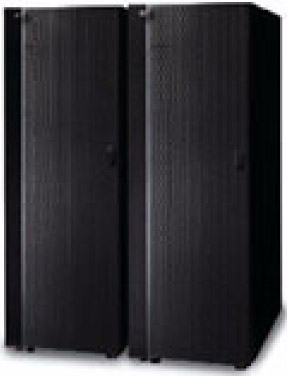2.1 Product overview
|
| < Day Day Up > |
|
2.1 Product overview
In the recent past, many business have become aware of the significant cost savings that can be made by deploying Linux clusters in place of traditional high performance computers. However, since Linux clusters are relatively new to the commercial marketplace, best practices are not widely known and many customers ended up "reinventing the wheel" when designing and procuring a cluster. Cluster deployments have often taken months before all the hardware and software components can be obtained and integrated to form a production environment.
IBM, through its services arm (IBM Global Services), has been involved for some time in helping customers build Linux-based clusters and has helped many customers through the maze that can be designing, procuring, and integrating a cluster. Working with this range of customers, practical experience has been built and best practices have been developed. IBM is now offering a solution that leverages its experience to combine best-of-breed software and hardware components into a fully integrated cluster solution. By providing an integrated cluster solution, IBM is enabling companies to deploy clusters faster, recognizing a greater return on investment in a shorter period of time.
The IBM ![]() Cluster 1350 is a recently announced solution that provides a set of hardware, software, and services that allows customers to quickly deploy cluster-based solutions. It brings together the hardware, software, and services required for a complete deployment along with a scalability that allows it to expand as your business changes.
Cluster 1350 is a recently announced solution that provides a set of hardware, software, and services that allows customers to quickly deploy cluster-based solutions. It brings together the hardware, software, and services required for a complete deployment along with a scalability that allows it to expand as your business changes.
The IBM ![]() Cluster 1350 (Figure 2-1 on page 23) consists of a combination of IBM and non-IBM hardware and software that can be configured to meet the specific needs of a particular customer. What is delivered is a customer defined configuration of one or more racks with the hardware already installed, configured, and tested. Once installed on-site, software installation and configuration tasks need to be performed. IBM optionally provides services to perform these as part of the product offering.
Cluster 1350 (Figure 2-1 on page 23) consists of a combination of IBM and non-IBM hardware and software that can be configured to meet the specific needs of a particular customer. What is delivered is a customer defined configuration of one or more racks with the hardware already installed, configured, and tested. Once installed on-site, software installation and configuration tasks need to be performed. IBM optionally provides services to perform these as part of the product offering.

Figure 2-1: IBM eServer Cluster 1350
The IBM ![]() Cluster 1350 is ordered as an integrated offering. Therefore, instead of having to develop a system design and then obtain and integrate all of the individual components, the entire solution is delivered as a unit. IBM provides end-to-end support of all cluster components, including industry-leading technologies from original equipment manufacturer (OEM) suppliers such as Myricom.
Cluster 1350 is ordered as an integrated offering. Therefore, instead of having to develop a system design and then obtain and integrate all of the individual components, the entire solution is delivered as a unit. IBM provides end-to-end support of all cluster components, including industry-leading technologies from original equipment manufacturer (OEM) suppliers such as Myricom.
The basic building blocks of the IBM ![]() Cluster 1350 are a number of Intel based nodes, however, more than just servers in a rack are required to make a cluster; specific software must be added to the mix to enable the systems to operate together. Besides the node hardware, the Cluster 1350 includes a variety of bundled software that allows it to be operated and managed as a true cluster. The software is discussed in depth in 2.3, "Software" on page 33.
Cluster 1350 are a number of Intel based nodes, however, more than just servers in a rack are required to make a cluster; specific software must be added to the mix to enable the systems to operate together. Besides the node hardware, the Cluster 1350 includes a variety of bundled software that allows it to be operated and managed as a true cluster. The software is discussed in depth in 2.3, "Software" on page 33.
The IBM ![]() Cluster 1350 that is installed at the customer's site is a system tailor-made for the individual customer. Subject to the application(s) that the customer desires to run, an IBM
Cluster 1350 that is installed at the customer's site is a system tailor-made for the individual customer. Subject to the application(s) that the customer desires to run, an IBM ![]() Cluster 1350 can be up and in production literally days after the system arrives.
Cluster 1350 can be up and in production literally days after the system arrives.
In the following sections, we describe in more detail the components that make up the IBM ![]() Cluster 1350 product offering.
Cluster 1350 product offering.
|
| < Day Day Up > |
|
EAN: 2147483647
Pages: 123